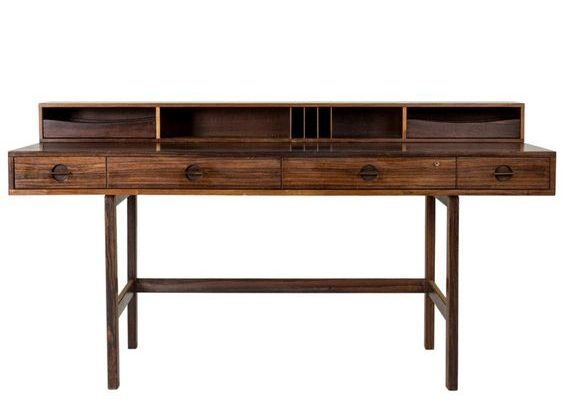When looking at the aesthetics side of furniture, remember not all your pieces have to match – embrace variety! Don’t be afraid to mix wood tones, colors, and metals. Furniture can act as a pop of color or pattern within your office design. Storage baskets and bulletin boards can add a texture or color, while providing you with a crucial function as well.
Equally as important to aesthetics is function. Make your furniture work for you by selecting the right type for your needs, allowing enough clearance space around it, and avoiding over furnishing your space. Furniture with poor ergonomics can lead to back pain, shoulder ache, leg pain, and neck pain. Below we tackle the basic furniture components of your office and tips on what to look for when choosing them.
Photo Right: A small space fits all the storage needs while keeping neat and organized.

